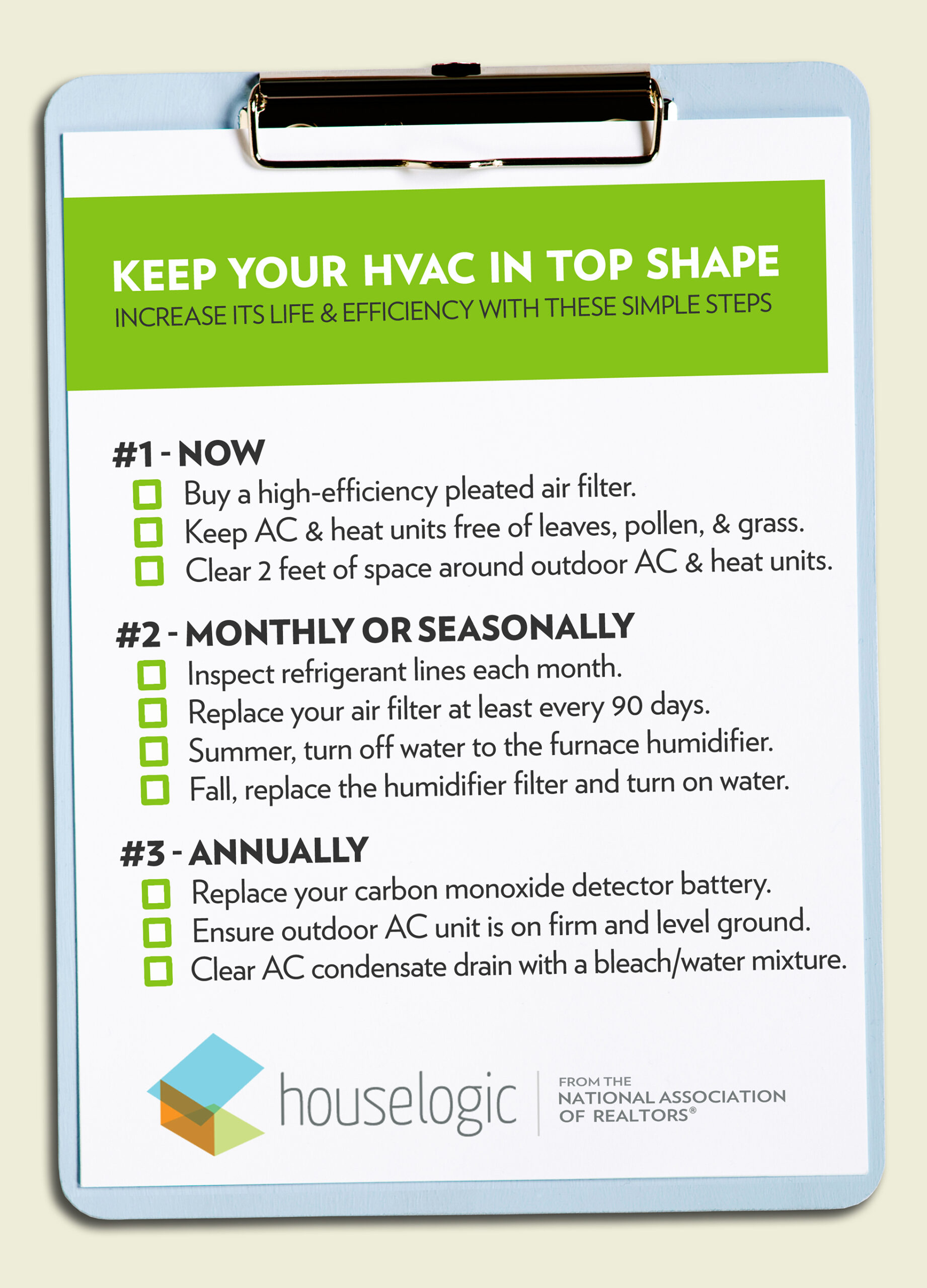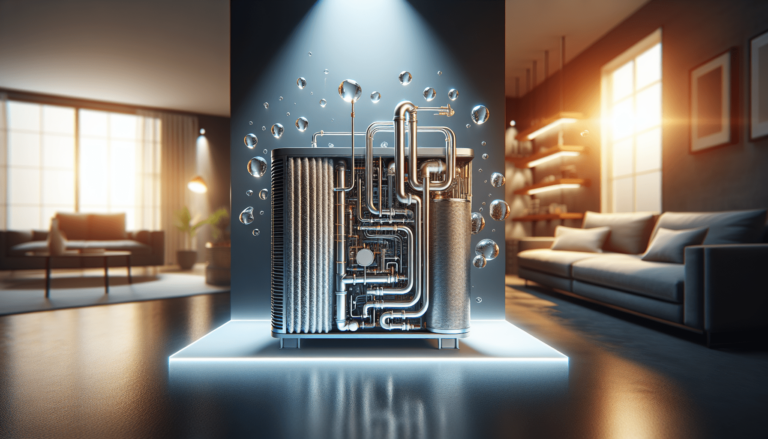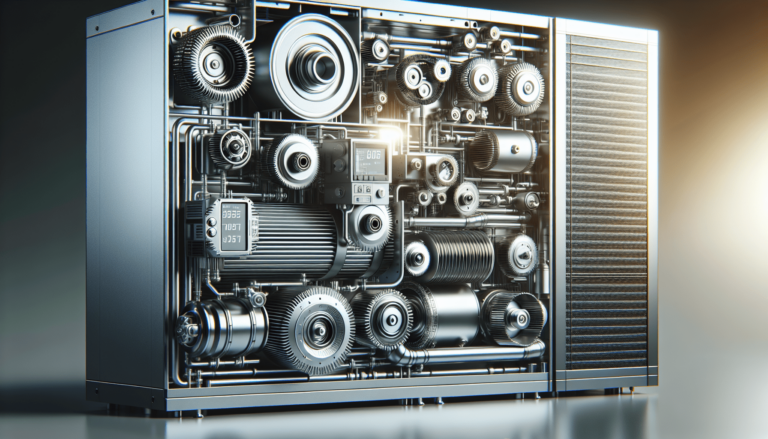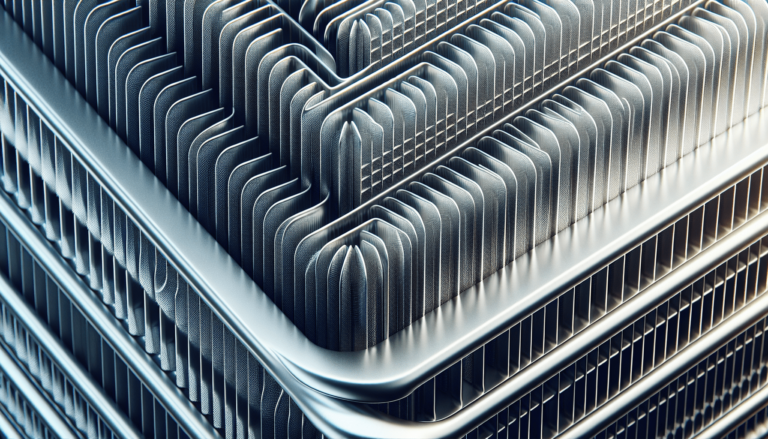

HVAC Services
Get Professional Repairs From The Area's Trusted HVAC Technicians. Ask About Our Services! We Offer Professional Heating & Cooling System Repairs And Guarantee Long-Lasting Results.
Got Question? Call us: (850) 678-2665Financing
Maintenance Checklist: Ensuring HVAC Longevity
Ensure the longevity of your HVAC system with this maintenance checklist. From cleaning filters to checking refrigerant levels, these essential tasks will enhance efficiency and performance. Improve air quality and prevent breakdowns to create a cozy environment in your home. Read more here.

In this article, we will explore the essential maintenance checklist to ensure the longevity of your HVAC system. With the name “Maintenance Checklist: Ensuring HVAC Longevity,” we’ll guide you through the necessary steps to keep your heating and air conditioning system in top-notch condition. From regular filter replacements to scheduled professional inspections, these maintenance tasks will not only extend the lifespan of your HVAC unit but also enhance its efficiency and performance. By following this checklist, you can ensure a comfortable and cozy environment in your home all year round. So, let’s dive into the maintenance checklist and take the necessary steps to keep your HVAC system running smoothly.
Regular Cleaning
Regular cleaning is a vital part of maintaining the longevity of your HVAC system. By following a few simple steps, you can ensure that your system runs smoothly and efficiently, reducing the risk of breakdowns and increasing its lifespan.
Clean or replace air filters
The air filters in your HVAC system play a crucial role in maintaining indoor air quality and protecting the system from dust and debris. It is recommended to clean or replace the filters every 1-2 months, depending on usage and the environment. Cleaning or replacing the filters on a regular basis prevents clogging and allows for proper airflow, ultimately improving the system’s efficiency and reducing energy consumption.
Clear debris from the outdoor unit
The outdoor unit of your HVAC system is exposed to various elements like leaves, dirt, and debris. These can accumulate and hinder the system’s performance. Regularly inspecting and clearing out any debris from the outdoor unit will ensure optimal airflow and prevent potential damage to the system.
Clean evaporator and condenser coils
The evaporator and condenser coils are critical components of your HVAC system. Over time, these coils can become dirty and reduce the system’s efficiency. Cleaning them periodically with a coil cleaner helps remove any dust, dirt, or debris, allowing for proper heat exchange and maximizing the system’s performance.
Clean and straighten fins
The fins located on the outdoor unit of your HVAC system can become bent or blocked, hindering airflow. Gently straightening the fins with a fin comb will improve the system’s efficiency by ensuring proper air circulation. Additionally, it is essential to clean the fins to remove any dirt or debris that may have accumulated. This simple maintenance task goes a long way in maintaining the optimal functioning of your HVAC system.
Clean and clear condensate lines
The condensate lines are responsible for removing moisture from the HVAC system. Over time, these lines can become clogged with dirt, mold, or algae, leading to inefficient drainage and potential water damage. Regularly cleaning and clearing the condensate lines will prevent clogs and keep your HVAC system running smoothly.
Inspecting and Lubricating Components
Inspecting and lubricating various components of your HVAC system ensures smooth operation and reduces the risk of wear and tear. By following this routine maintenance checklist, you can identify any potential issues early on and prevent costly repairs down the line.
Inspect blower motor and fan
The blower motor and fan play a crucial role in circulating air throughout the HVAC system. Regularly inspecting these components allows you to identify any signs of wear, damage, or abnormal noises. If any issues are detected, it is important to address them promptly to prevent further damage.
Inspect and lubricate motor bearings
Motor bearings assist in the smooth operation of various HVAC system components. Over time, these bearings can become worn or dry, leading to increased friction and potential damage. Regularly inspecting and lubricating the motor bearings ensures proper functioning and extends their lifespan.
Inspect belts for wear and tension
Belts are used to transfer power between various components of your HVAC system. Over time, they can become worn, loose, or misaligned. Regularly inspecting the belts for signs of wear or improper tension will help identify any issues early on. Adjusting or replacing the belts as needed will ensure the efficient operation of your HVAC system.
Inspect electrical connections
Proper electrical connections are essential for the safe and efficient operation of your HVAC system. Regularly inspecting the electrical connections helps identify any loose or damaged wires, which could potentially cause malfunctions or safety hazards. It is important to address any electrical issues promptly by a qualified professional.
Inspect and clean thermostat
The thermostat is the control center of your HVAC system. Regularly inspecting and cleaning the thermostat ensures accurate temperature readings and correct operation. Dust or debris can accumulate over time, affecting the thermostat’s performance. Gently wiping the thermostat with a soft cloth and ensuring it is free from any obstructions will help maintain its functionality.
Checking Refrigerant Levels
The refrigerant in your HVAC system is responsible for absorbing heat from the indoor air and releasing it outside. To ensure optimal cooling performance and prevent damage to the system, it is important to regularly check the refrigerant levels.
Check refrigerant levels
Checking the refrigerant levels requires the expertise of a professional HVAC technician. They will use specialized tools to measure the refrigerant levels and ensure they are within the manufacturer’s recommended range. Low refrigerant levels can indicate a leak or other issues that need to be addressed promptly to maintain the system’s efficiency.
Check for leaks
Refrigerant leaks can significantly impact the performance of your HVAC system and increase energy consumption. A professional technician will inspect the system for any signs of refrigerant leaks, such as oil stains or hissing sounds. If leaks are detected, they will be repaired promptly to prevent further damage.
Inspect and clean the condensate drain pan
The condensate drain pan collects the moisture that is removed from the indoor air during the cooling process. Over time, the drain pan can become dirty or clogged, leading to potential water damage or mold growth. Regularly inspecting and cleaning the condensate drain pan ensures proper drainage and prevents any issues caused by standing water.
Testing Electrical Controls
Electrical controls are essential for the safe and efficient operation of your HVAC system. Regularly testing these controls safeguards against malfunctions, improves system performance, and enhances safety.
Test voltage and amperage on motors
Proper voltage and amperage are crucial for motor functioning. Testing the voltage and amperage on motors ensures they are operating within the manufacturer’s specified range. Deviations from the recommended levels could indicate potential issues that need to be addressed.
Check safety controls
Safety controls in the HVAC system are designed to protect against malfunctions and ensure safe operation. Regularly checking these safety controls, such as limit switches and pressure switches, will help identify any abnormalities and prevent potential hazards.
Inspect control board and relays
The control board and relays coordinate the operation of various components in your HVAC system. Regular inspection ensures that these components are functioning properly and that there are no loose connections or signs of damage. Correct functioning of the control board and relays is crucial for seamless system operation.
Maintaining the Thermostat
The thermostat is the user interface for your HVAC system and plays a significant role in maintaining comfort and energy efficiency. Regular maintenance of the thermostat helps optimize its performance and maximize system performance.
Calibrate thermostat
Thermostats can sometimes lose calibration over time, resulting in inaccurate temperature readings and improper system operation. Calibrating the thermostat ensures accurate temperature control and optimal comfort settings. consult the manufacturer’s instructions or consider contacting a professional technician for assistance.
Program temperature settings
Programming temperature settings based on your daily routine can help optimize energy usage and reduce unnecessary heating or cooling. Utilize the thermostat’s programming features to set different temperature levels throughout the day, ensuring comfort while minimizing energy consumption.
Replace batteries
Some thermostats are battery-powered, and it is important to replace the batteries regularly to prevent power loss and ensure continuous operation. Check the manufacturer’s instructions to determine the recommended battery replacement schedule for your thermostat.
Checking and Adjusting Airflow
Proper airflow is essential for the efficient operation of your HVAC system. Checking and adjusting the airflow ensures even distribution of conditioned air throughout your home, maximizing comfort and energy efficiency.
Test and balance airflow
Uneven airflow can lead to hot or cold spots in your home, indicating an imbalance in your HVAC system. A professional technician can perform tests to measure airflow in each room and identify any imbalances. Balancing the airflow through proper adjustments ensures consistent comfort levels throughout your home.
Inspect and adjust dampers
Dampers are used to control the amount of air flowing through specific areas or rooms in your home. Regularly inspecting and adjusting dampers ensures that they are open or closed as needed, based on your preferences or individual room requirements. Properly adjusted dampers contribute to even airflow distribution and improved system efficiency.
Verify proper ventilation
Good ventilation is crucial for maintaining indoor air quality and preventing the build-up of pollutants and moisture. Ensuring proper ventilation includes inspecting air intakes and exhaust vents for obstructions or damage. Additionally, it may involve evaluating the performance of ventilation fans and making necessary adjustments to enhance airflow and ventilation effectiveness.
Inspecting and Cleaning Ductwork
Clean and properly sealed ductwork is essential for the efficient functioning of your HVAC system. Regular inspection and cleaning of the ductwork help prevent the accumulation of dust, allergens, and other particles, maintaining good indoor air quality.
Inspect duct joints and seals
Duct joints and seals can deteriorate over time, leading to air leaks and reduced efficiency. Regularly inspecting the duct joints and seals helps identify any signs of wear, gaps, or leaks. Promptly repairing or sealing these joints ensures that conditioned air reaches its intended destinations without any losses or inefficiencies.
Clean ductwork and vents
Ductwork can accumulate dust, debris, and even mold if not cleaned regularly. Professional duct cleaning services can remove these contaminants, improving indoor air quality and preventing blockages that can hamper system performance. Cleaning the vents and registers throughout your home enhances airflow and reduces the risk of circulating pollutants.
Check for obstructions
Obstructed ductwork can hinder proper airflow, leading to reduced system efficiency and potential damage. Regularly check the ductwork for any obstructions, such as furniture, curtains, or debris. Ensuring there are no blockages or restrictions in the ductwork allows for smooth airflow and optimal system functioning.
Verifying System Performance and Efficiency
Regularly verifying the performance and efficiency of your HVAC system helps identify any issues or inefficiencies early on. Monitoring energy consumption, insulation, and temperature differentials ensures that your system is functioning optimally.
Check temperature differential
Temperature differential is the temperature variance between the supply and return air. A professional technician can measure and analyze this differential to determine whether your HVAC system is performing efficiently. Deviations from the ideal temperature differential may indicate issues that require attention.
Monitor energy consumption
Monitoring energy consumption allows you to assess the efficiency of your HVAC system. Comparing energy bills over time or using energy monitoring tools can provide valuable insights into the system’s performance. Sudden spikes in energy consumption may indicate potential issues that need to be addressed.
Inspect insulation
Proper insulation is crucial for maintaining a comfortable indoor environment and preventing energy loss. Regularly inspecting insulation in your home, such as in the attic, walls, or basement, helps identify any deteriorated or damaged areas. If insulation is compromised, it should be repaired or replaced to ensure optimal energy efficiency.
Testing Safety Controls
Safety controls in your HVAC system are designed to protect both your equipment and your home. Regular testing of these controls helps ensure their proper functionality and maintain a safe environment.
Test smoke and carbon monoxide detectors
Smoke and carbon monoxide detectors are critical for the safety of your home and family. Regularly testing these detectors, following the manufacturer’s instructions, ensures they are operational and capable of detecting potential threats. Promptly replace batteries or units that are not functioning properly.
Inspect flame sensor and pilot light
For gas-powered HVAC systems, inspecting the flame sensor and pilot light is essential for safe and efficient operation. A professional technician can inspect these components, ensuring the pilot light ignites properly and the flame sensor is clean and functioning correctly. Addressing any issues detected improves system performance and safety.
Conclusion
Regular maintenance is key to optimizing the longevity of your HVAC system. By following a comprehensive checklist that includes cleaning, inspecting, lubricating, testing, and maintaining various components, you can ensure that your HVAC system operates efficiently and reliably for years to come. Consulting with a professional HVAC technician for regular maintenance and addressing any identified issues promptly will help prevent costly repairs and extend the lifespan of your system. By prioritizing maintenance, you can enjoy the benefits of a comfortable, energy-efficient, and reliable HVAC system.







